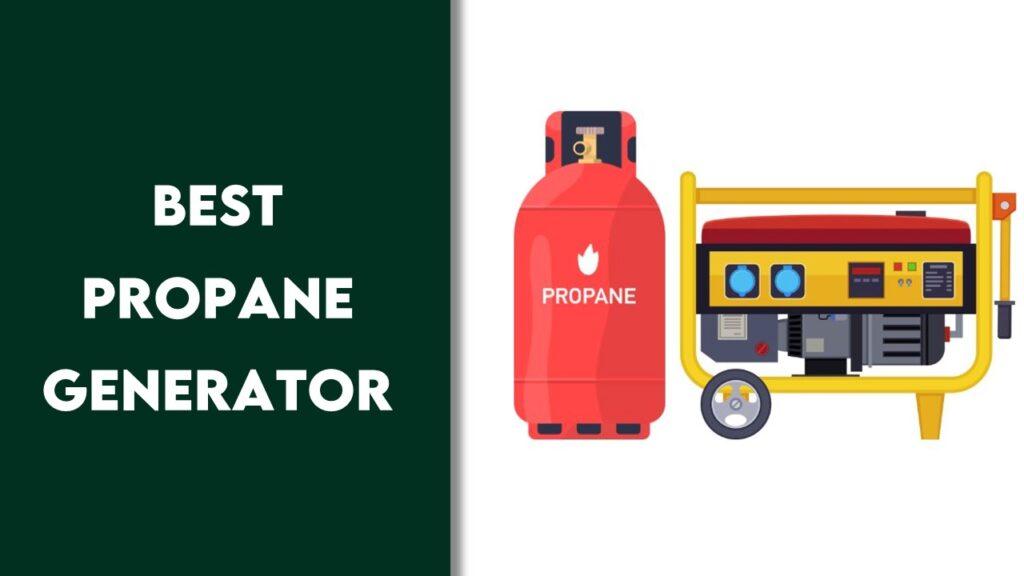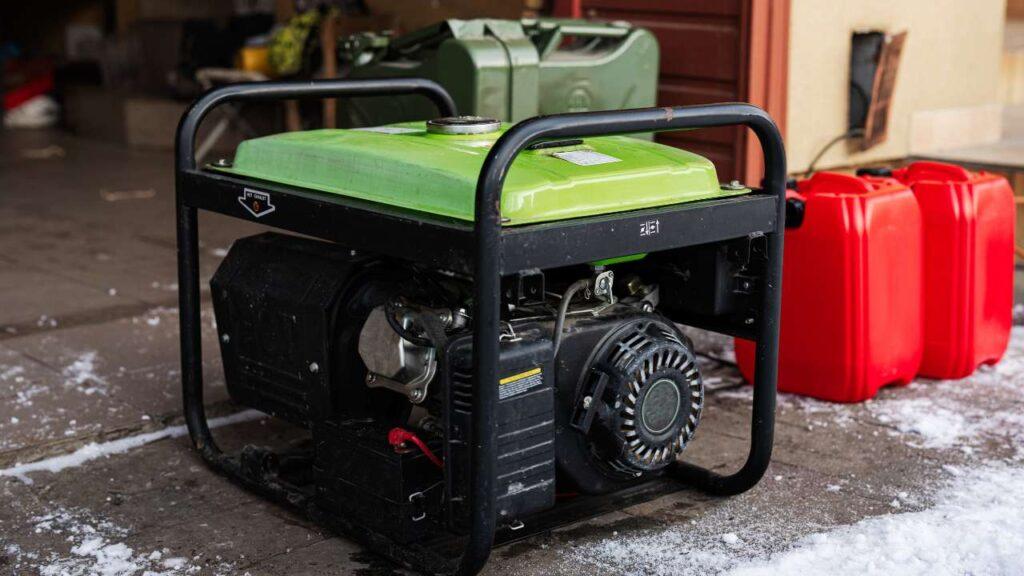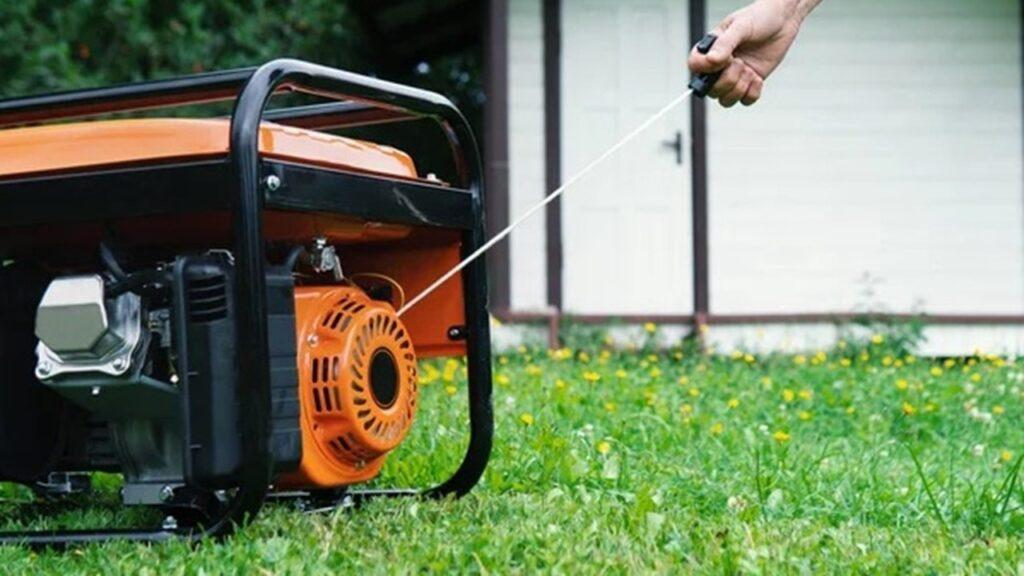
If your generator keeps shutting off even when there’s enough oil, you might need to know how to bypass the low oil sensor on a generator. This can help you check if a faulty sensor is causing the issue. Bypassing the sensor means disconnecting it temporarily to see if the generator runs smoothly without it. But be careful—this is only a quick way to test, not a long-term fix. In this guide, we’ll walk you through the steps to safely bypass the low oil sensor, explain why it might be necessary, and discuss how to keep your generator running safely. Stick around to learn the right way to handle this and avoid costly mistakes.
Understanding the Low Oil Sensor in Generators
The low oil sensor in a generator is a key safety feature that prevents damage to the engine. When oil levels drop too low, the sensor triggers an automatic shutdown to protect the engine from running without proper lubrication. But what exactly does the low oil sensor do, and why can it sometimes cause problems? Let’s explore this in detail to understand how it works and what issues might come up.
What is a Low Oil Sensor and How Does It Work?
A low oil sensor is like a guardian for your generator’s engine. It monitors the oil level inside the engine and makes sure it doesn’t drop below a safe point. If the oil level gets too low, the sensor sends a signal to shut down the engine immediately. This helps avoid serious engine damage because, without enough oil, the moving parts inside the engine can grind against each other, causing wear and tear or even complete failure.
- How It Works: The sensor is usually a small device inside the generator’s engine compartment. It’s connected to a switch that monitors oil pressure or level. When the oil level falls below the threshold, the sensor activates, cutting off the ignition to stop the engine.
- Why It’s Important: By shutting down the engine, the sensor prevents overheating and possible damage, extending the life of your generator. It’s especially crucial if you often run your generator for long periods or in hot weather, where oil consumption can be higher.
Common Issues with Low Oil Sensors
While low oil sensors are crucial for engine safety, they can sometimes cause headaches for users. Here are some common problems you might face with these sensors:
- False Alarms: Sometimes, the sensor can malfunction and signal a low oil level even when there is enough oil. This can happen due to sensor wear, contamination, or even a loose connection.
- Wiring Issues: Over time, the wiring connecting the sensor to the generator’s control system can become damaged or loose, leading to incorrect readings or unnecessary shutdowns.
- Sensor Sensitivity: Some sensors are overly sensitive and may trigger a shutdown even with slight oil level drops. This could be annoying when operating the generator under normal conditions.
When these issues occur, it might seem like your generator has a more severe problem than it does. Understanding these common problems helps you identify if the sensor is causing unnecessary interruptions.
Knowing how a low oil sensor functions and the common issues it can face gives you a clearer picture of what might be happening when your generator acts up. Next, we’ll explore why you might need to bypass this sensor and when it’s safe to do so.
Why Might You Need to Bypass the Low Oil Sensor?
Bypassing the low oil sensor isn’t something you’d want to do regularly, but it can be necessary in some cases. If your generator keeps shutting down even with enough oil, bypassing the sensor temporarily might help diagnose if it’s the culprit. However, it’s important to understand that bypassing the sensor comes with risks and should only be done as a last resort. Let’s break down why and when you might need to bypass the low oil sensor.
Diagnosing Sensor-Related Problems
Bypassing the low oil sensor can be a helpful troubleshooting step when you’re dealing with constant shutdowns or alerts. Here’s why:
- Temporary Test: Bypassing the sensor allows you to run the generator without it for a short time. If the generator runs smoothly without shutting down, you know the sensor is faulty.
- Confirming Faulty Sensors: This test helps confirm if the problem is indeed with the sensor or if there’s a deeper issue with the generator’s oil system. It helps narrow down the problem, saving you time and unnecessary repairs.
- Easy to Reconnect: Most of the time, bypassing the sensor is a simple process that involves disconnecting and reconnecting a few wires, making it a straightforward troubleshooting step.
While this can provide quick answers, remember that running a generator without the sensor puts the engine at risk if the oil levels drop too low. Always proceed with caution.
Risks Involved in Bypassing the Sensor
Bypassing the low oil sensor is not without its risks. Here’s what you need to consider:
- Engine Damage: The most significant risk is running the generator without knowing the oil level. If the oil runs out, the engine parts can overheat, leading to severe damage.
- Loss of Warranty: Modifying or bypassing the sensor could void the warranty on your generator, leaving you responsible for any damages or repairs.
- Safety Hazards: Operating without this safety feature means you must constantly monitor the oil levels manually. Forgetting to do so can lead to engine failure or even safety hazards.
Bypassing the low oil sensor should only be considered a temporary fix to diagnose a problem, not a permanent solution. It’s crucial to weigh the risks and benefits and take every precaution to protect your generator’s engine.
You can also check put our guide on top generators for emergency home backup power as well.
General Steps to Bypass a Low Oil Sensor on a Generator
Bypassing the low oil sensor on your generator is a temporary step to diagnose if it’s causing problems. Safety is key, and you should follow a systematic approach to ensure you don’t damage the generator or hurt yourself. Here, we’ll walk through the safety steps, how to locate and disconnect the sensor, and how to test the generator after bypassing it.
Safety Preparations and Precautions
Before you begin bypassing the low oil sensor, it’s crucial to take safety precautions. This ensures you and your generator stay safe throughout the process. Here’s what you need to do:
- Turn Off the Generator: Make sure the generator is completely turned off. Remove any external power sources and unplug it to avoid electrical shocks.
- Allow It to Cool Down: Generators can get very hot during operation. Allow it to cool down completely before touching any parts. This will prevent burns and other injuries.
- Prepare Necessary Tools: Gather the tools you need, such as screwdrivers, pliers, and insulated gloves. Make sure you have everything ready before you start to avoid unnecessary delays.
- Work in a Well-Ventilated Area: Ensure you are in a well-ventilated space, free from flammable materials. This reduces the risk of fire or inhaling harmful fumes.
- Read the Owner’s Manual: Review the generator’s manual to understand the location of components and any specific instructions from the manufacturer.
Safety First: These steps help ensure that you don’t accidentally harm yourself or damage the generator while attempting to bypass the sensor.
Locating and Disconnecting the Low Oil Sensor
Once you’re prepared, the next step is to locate and disconnect the low oil sensor. Different generators may have the sensor in slightly different places, but here’s a general guide:
- Find the Sensor: The low oil sensor is usually located near the engine block or oil tank. Look for a small device connected by wires, often accessible through the control panel or engine compartment.
- Remove the Access Panel: Use a screwdriver to carefully remove any panels covering the sensor. Be gentle to avoid damaging any parts.
- Identify the Sensor Wiring: Look for the wires that connect the sensor to the generator’s control system. These are often color-coded, so check your manual for the specific wiring details.
- Disconnect the Sensor: Gently disconnect the wires using pliers. Make sure not to cut the wires; you may need to reconnect them later. If necessary, tape the loose ends to prevent them from touching and causing a short circuit.
Be Careful: Handle all parts carefully to avoid damaging the generator or causing a safety hazard.
Testing the Generator Post-Bypass
After disconnecting the sensor, it’s time to test your generator to see if it runs smoothly without the sensor causing shutdowns. Here’s how to do it:
- Start the Generator: Turn on the generator as you normally would. Listen for any unusual sounds that could indicate problems.
- Monitor for Shutdowns: Let the generator run for a few minutes. If it doesn’t shut down like it did before, it’s likely the sensor was causing the issue.
- Check for Warning Lights: Some generators have indicator lights or error codes. Check these to ensure there are no new issues after bypassing the sensor.
- Reconnect If Necessary: If everything seems to work fine without the sensor, you’ve found the problem. But remember, this is a temporary solution. Plan to replace or repair the sensor soon.
Final Check: Always keep an eye on the generator’s performance after bypassing the sensor to ensure it’s running safely.
By following these steps carefully, you can safely bypass the low oil sensor on your generator and diagnose if it’s causing unnecessary shutdowns. Next, we’ll cover how to bypass the low oil sensor on different generator brands.
How to Bypass the Low Oil Sensor on Popular Generator Brands
Different generator brands have unique setups for their low oil sensors, making it crucial to understand these differences for a safe and effective bypass. Below, we’ll provide detailed steps for bypassing the low oil sensor on some of the most popular generator brands, including Honda, Generac, Champion, Westinghouse, and Yamaha. Following these steps can help you diagnose sensor-related problems without causing further issues.
Honda Generators
Honda generators are widely appreciated for their durability and reliability. However, even reliable machines can have issues like a malfunctioning low oil sensor. If your Honda generator is shutting down unnecessarily, here’s how to bypass the low oil sensor safely:
- Access the Sensor Panel: Start by locating the control panel area on the generator where the low oil sensor is housed. In most Honda models, like the EU2200i or EB3000c, the sensor is behind a secured panel. Use a Phillips head screwdriver to remove the screws holding the panel in place. Be cautious not to lose any screws or small parts during this process.
- Identify the Sensor and Wiring: Once the panel is removed, look for the low oil sensor, which is often a small device with wires coming out of it. Honda generators usually have clearly labeled wiring—commonly white or black wires—leading from the sensor to the generator’s main control system. Use the user manual to confirm the color codes and wiring paths.
- Safely Disconnect the Sensor: With the wiring identified, use a pair of pliers to carefully disconnect the wires from the sensor. It’s important to tape off any exposed wire ends with electrical tape to prevent accidental short circuits or electrical shocks.
- Test the Generator: After disconnecting the sensor, reassemble the panel and start the generator. Observe its operation closely for several minutes. If it runs without shutting down, it’s likely that the sensor was faulty. Remember, this is a temporary fix and should be followed up with sensor repair or replacement.
- Tip: Keep track of the screws and parts removed during this process to ensure smooth reassembly. It’s also a good idea to take a photo before disassembling, so you have a visual guide for putting it back together.
Generac Generators
Generac generators are popular for home backup power and outdoor use, but they can also experience low oil sensor issues. If your Generac generator, such as the GP6500 or iQ2000, keeps shutting down due to a faulty sensor, follow these steps:
- Access the Control Panel: Start by turning off the generator and disconnecting any power sources. Remove the outer casing of the generator to access the internal control panel. Generac generators often have the sensor wiring located in the engine compartment, which is reachable by removing a few screws and panels.
- Locate the Sensor: The low oil sensor is generally mounted near the oil filter or engine block in most Generac models. Consult the user manual to pinpoint the exact location. The sensor may look like a small, cylindrical device connected with wires to the main control board.
- Disconnect Carefully: Generac generators can have tighter spaces around the wiring, so it’s important to be patient and methodical. Use insulated tools to disconnect the sensor wiring carefully, avoiding damage to any nearby components. Tape the ends of the wires to prevent accidental contact.
- Restart the Generator: Once the sensor is disconnected, reassemble the casing and start the generator. Allow it to run for a while to see if it remains operational. If the problem is resolved, then the sensor was likely the issue.
- Unique Consideration: Generac generators may have additional safety features that could be affected by bypassing the sensor. Check the manual for any other sensors or overrides that need to be handled carefully.
Champion Generators
Champion generators, such as models 46539 or 100302, are known for their ruggedness and reliability, but they can still face low oil sensor problems. If you need to bypass the sensor, here’s how to do it:
- Remove the Access Cover: Begin by turning off the generator and letting it cool down. Open the access cover on the generator to reveal the internal components. The low oil sensor is usually located near the oil reservoir or dipstick area.
- Unplug the Sensor Wires: Carefully locate the sensor and identify the wires connected to it. Champion generators often come with integrated control panels, so you need to be cautious while unplugging the sensor wires to avoid disrupting other connections.
- Secure Loose Wires: After unplugging the wires, use electrical tape to secure the ends and prevent them from touching other metal parts or wiring, which could cause a short circuit.
- Run a Test Cycle: Start the generator and observe its operation. If the generator runs without any warnings or shutdowns, then the sensor was causing the issue. Be vigilant for any error codes or unusual sounds.
- Troubleshooting Tip: If you experience issues with integrated control panels or if bypassing doesn’t solve the problem, consult the Champion user manual or contact their customer service for specific guidance.
Westinghouse Generators
Westinghouse generators like the WGen7500 or iGen4500 are equipped with built-in low oil sensors to protect the engine. If you need to bypass the sensor, follow these detailed steps:
- Open the Generator Case: First, turn off the generator and disconnect it from any power source. Use a screwdriver to remove the bolts or screws securing the generator casing, allowing access to the internal components.
- Find the Low Oil Sensor: Look near the oil fill cap or engine block for the low oil sensor. It is typically a small component with wires leading to the control system. Refer to the user manual for visual references to confirm its location.
- Disconnect Using Insulated Tools: Using insulated pliers, carefully disconnect the sensor wires. Make sure the disconnected wires don’t touch each other or any metal parts. You can tape them individually for added safety.
- Check Performance: Restart the generator and monitor its performance for a few minutes. If the generator operates smoothly without any shutdowns, then the sensor may be faulty.
- Special Precaution: Westinghouse generators might require specific tools or techniques for disassembly. Always check the user manual before starting to ensure you have the right tools and steps.
Yamaha Generators
Yamaha generators, like the EF2000iSv2 or EF7200DE, are highly regarded for their efficiency and build quality. However, if you need to bypass the low oil sensor, here’s how to do it:
- Access the Sensor Compartment: Start by ensuring the generator is off and has cooled down. Remove any covers or panels to access the sensor area, which is often near the engine.
- Identify and Unplug the Sensor: Yamaha low oil sensors are typically mounted close to the engine or oil dipstick. Carefully identify the sensor wires and unplug them. Be gentle to avoid damaging the wiring or nearby components.
- Test the Generator After Bypass: Reassemble the panels and start the generator. Monitor its performance to ensure the issue is resolved. Listen carefully to the engine’s sound for any irregularities, as Yamaha generators often have distinctive running sounds that can signal issues.
- Unique Feature: Yamaha generators may have additional safety features or built-in alerts that could be affected when bypassing the sensor. Be aware of these and proceed cautiously.
Every generator brand has unique configurations, so knowing how to bypass the low oil sensor specifically for your model is essential for avoiding damage. Always prioritize safety by following the guidelines in your user manual and using the right tools for the job.
Safety Precautions When Operating a Generator Without a Low Oil Sensor
Operating a generator without a low oil sensor comes with significant risks. If you bypass the sensor, you must be extra vigilant about checking the oil levels and monitoring the generator’s overall performance. Here, we will discuss the best practices to keep your generator running smoothly and legally.
Monitoring Oil Levels and Engine Performance
Without a low oil sensor, you’ll need to manually monitor your generator’s oil levels and engine performance to prevent damage. Here are some best practices to follow:
- Check Oil Levels Regularly: Before starting the generator and after every few hours of use, check the oil level using the dipstick. Make sure the oil level is between the “min” and “max” marks. Keep a spare bottle of oil handy to top up as needed.
- Watch for Warning Signs: Pay attention to signs of engine distress like unusual noises (knocking or grinding), excessive smoke, or vibrations. These could indicate low oil or engine problems.
- Perform Routine Maintenance: Change the oil and oil filter according to the manufacturer’s guidelines. Clean or replace the air filter regularly and check for leaks.
- Monitor Engine Temperature: Without enough oil, the engine can overheat. If your generator has a temperature gauge, keep an eye on it. If not, touch the exterior carefully to ensure it’s not too hot to touch.
Signs of Engine Distress: Unusual noises, loss of power, excessive smoke, or the engine shutting off abruptly could mean trouble. Shut down the generator immediately to avoid further damage.
Understanding Local Regulations and Warranty Implications
Bypassing the low oil sensor can have legal and warranty consequences. Many manufacturers design generators to comply with safety regulations, and modifying them could void warranties and break local laws.
- Legal Issues: In some regions, operating a modified generator may violate safety regulations. For example, the U.S. Environmental Protection Agency (EPA) has rules about generator emissions and safety features. Operating a generator without these features may lead to fines.
- Warranty Void: Bypassing the low oil sensor is considered a modification. Manufacturers like Honda, Generac, and Yamaha often state in their warranty terms that any modifications void the warranty. This means you’ll have to pay out of pocket for any repairs or damages.
- Check Manufacturer Policies: Always check your generator’s warranty and the user manual before making any changes. Some manufacturers offer specific instructions or guidelines for handling sensor issues that won’t void the warranty.
Be Informed: Understanding the implications of bypassing the low oil sensor can save you from legal troubles and unexpected expenses. Always prioritize safety and compliance.
Safety should always come first when operating a generator without a low oil sensor. By monitoring oil levels closely and understanding the regulations and warranty implications, you can minimize risks and keep your generator in top condition.
Wrapping Up
Bypassing the low oil sensor on a generator can help diagnose problems when the sensor is faulty, but it comes with risks. This article covered how the low oil sensor works, why you might need to bypass it, and detailed steps for different generator brands. We also discussed safety precautions and the legal and warranty implications of bypassing the sensor.
Remember, bypassing the sensor should only be a temporary troubleshooting measure. It’s essential to repair or replace a faulty sensor to ensure your generator operates safely and efficiently. Regularly checking the oil levels and performing routine maintenance is crucial, especially when the sensor is bypassed.
Prioritize your safety and the longevity of your generator. If you’re unsure about bypassing or need help, consider consulting a professional or reaching out to the manufacturer for guidance. Proper care and following the right steps will keep your generator running smoothly for years to come.
Related FAQs
Can Bypassing The Low Oil Sensor Damage The Generator?
Yes, bypassing the sensor can lead to engine damage if oil levels are not monitored carefully.
Is It Safe To Run A Generator Without A Low Oil Sensor?
No, it increases the risk of engine failure due to inadequate oil levels and requires constant monitoring.
How Often Should I Check Oil Levels If The Sensor Is Bypassed?
You should check the oil levels before every use and every few hours during operation.
Does Bypassing The Sensor Void The Generator Warranty?
Yes, modifying the generator by bypassing the sensor usually voids the manufacturer’s warranty.
Can I Reconnect The Low Oil Sensor After Bypassing It?
Yes, you can reconnect it if you suspect the sensor is functioning correctly or after it is repaired.
At our core, we’re a group of passionate generator, inverter, solar energy, battery enthusiasts. We dive deep into the world of tech, especially when it’s about powering your home, RV or outdoors. We try to provide as much value to the readers with our information and how to blog articles as possible. For affiliate articles our honest and transparent reviews of essential tech products are rooted in real-world experience. We take great satisfaction in offering unbiased evaluations, ensuring that you can make informed decisions when investing in your desired techs.




